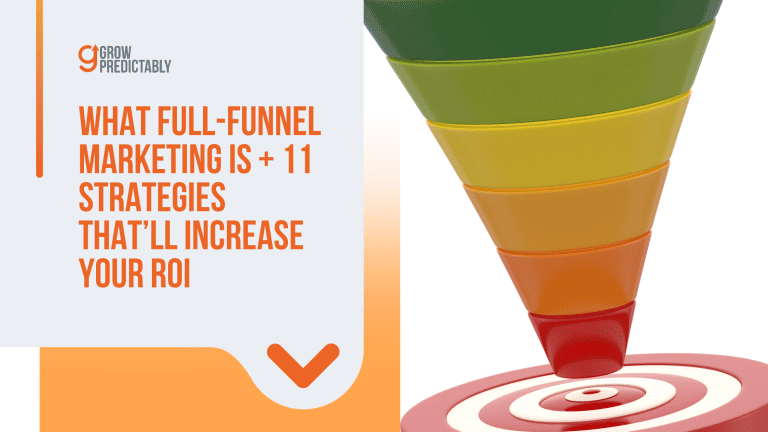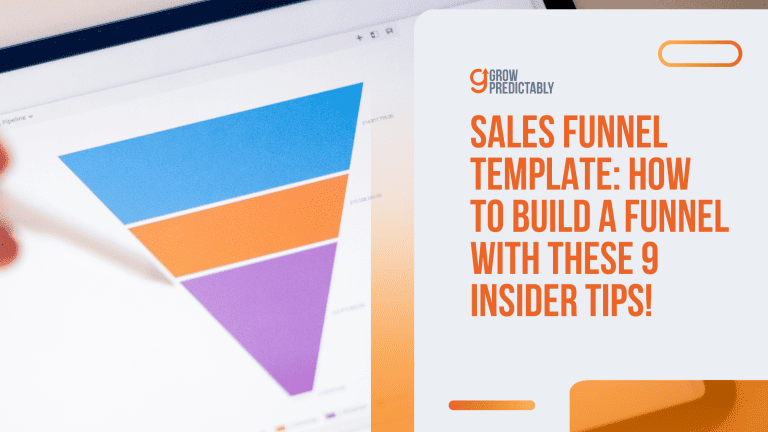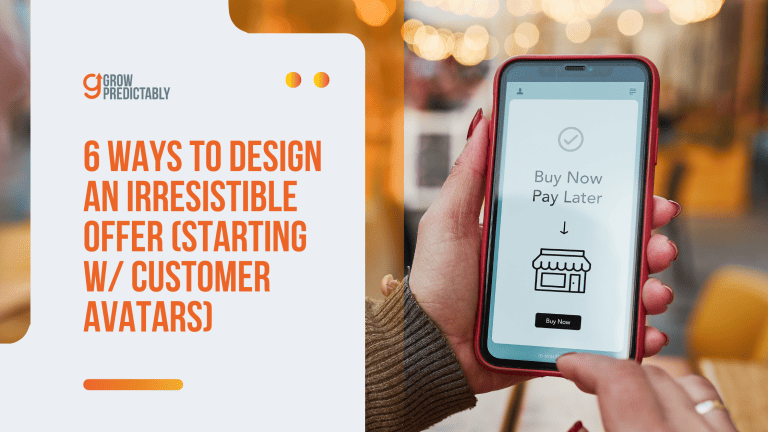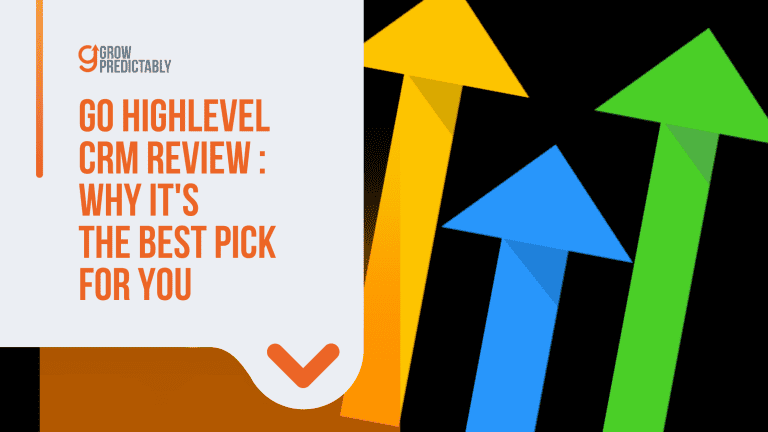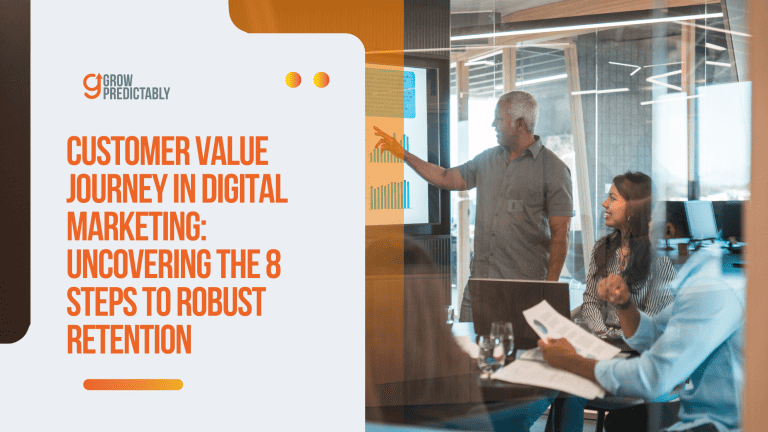9 Lead Magnets for SaaS Brands – How to Choose the Best One?
Tired of seeing low engagement on your SaaS website?
You’re likely missing a crucial element: effective lead magnets.
The main idea here is simple yet powerful: tailored lead magnets can increase customer engagement by providing value that speaks directly to their needs.
By implementing strategic lead magnets, you can expect not just more leads but better quality engagements that translate to sales.
Dive into this blog to learn how to leverage this insight and see a real change in your interaction rates.
Let’s turn that traffic into tangible growth!
Beginning with a quick refresher: what does your lead magnet need to achieve?
What is a Lead Magnet?
A lead magnet is like a trade deal. Imagine you’ve got something cool and useful, and you’re willing to give it away for free.
But here’s the catch: people gotta give you their contact in exchange.
This isn’t just any freebie we’re talking about. It’s something super valuable that your audience can’t resist—like a guide, a discount code, or an exclusive video.
Why do this? Well, it’s a smart move to get folks interested in what you’re selling without being pushy.
They get something helpful, and you get a way to connect with them later.
It’s a win-win.
You keep them in the loop with more cool stuff, and hopefully, down the line, they think, “Hey, I like what these guys are doing,” and boom, you’ve got a new customer.
Sounds good, right?
But to do that, you need to use a lead magnet that’s the most ideal for your SaaS business.
Here’s how…
How to Find the Best Lead Magnets for SaaS Brands
Of course, your goal is to find the best lead magnet for your SaaS business.
One way to do this is to use what we call customer avatars!

Now, why is this important for finding your lead magnet? Simple.
When you know exactly who you’re talking to, you can craft something that speaks directly to their needs, desires, and pains.
And guess what? That’s exactly what makes a lead magnet go from “meh” to “wow.”
To create your own customer avatar, download the FREE Customer Avatar Canvas right here.
Here’s how you can use customer avatars to nail it:
- Get up close and personal: Use those customer avatars to really get into your ideal customer’s head. What problems are they facing? What keeps them up at night? And more importantly, how can your SaaS solution make their lives a whole lot easier?
- Match their pain points to your solution: Look at the pain points and challenges outlined in your customer avatar documents. Your lead magnet should act like a superhero swooping in to save the day. Offering a sneak peek into how your SaaS can solve their issues is key.
- Before and After Magic: Lean into those before and after scenarios you’ve sketched out in your customer avatar canvas. Show your potential customers a glimpse of how much better their lives could be after they grab your lead magnet. It’s all about painting a picture where your SaaS is the hero of the story.
- Tailor it like a pro: Nobody likes one-size-fits-all solutions, right? Use the detailed insights from your customer avatars—like demographics, interests, and key purchase drivers—to personalize your lead magnet. This way, it feels like you’re speaking directly to each potential customer.
- Test and tweak: Got more than one type of ideal customer? Perfect! Make different versions of your lead magnets tailored to each customer avatar. Keep an eye on which one pulls in more leads and adjust accordingly. Remember, what rocks one person’s boat might not even make waves for another.
And there you have it.
By using customer avatars, you’re not just shooting arrows in the dark, hoping to hit something. Nope.
You’re strategically aiming and firing at targets you know you can hit.
This means your lead magnet isn’t just a freebie; it’s the beginning of a beautiful friendship between your SaaS and your ideal customers.
NOTE: Keep refining those avatars as your business grows and evolves. Your audience’s needs might change, and staying in tune with them ensures your lead magnets continue to be irresistible.
Now that we’ve identified the approach you need to take to find the best lead magnet for your target audience, here are your options.
The 9 Best Lead Magnets for SaaS
If you have experienced interacting with a landing page before, you’ve probably already encountered one lead magnet or two.
Can you recall them?
Aside from the examples discussed in this blog, many other examples are out there. But the ones we’ll focus on in this article are the most ideal in the SaaS industry.
Here are nine lead magnet ideas and examples for you to try:
1. Guides offer your audience a helping hand

Guides are super useful because they’re packed with detailed information and tips that can really help users.
They show off your expertise and give real value to your potential customers, which builds trust for your SaaS brand.
Plus, they’re great for explaining complex stuff about your product in a way that’s easy to get.
When you solve people’s problems or answer their big questions, they’re more likely to sign up for more.
When to use guides as a lead magnet:
- Product Launches: Introduce new features or services.
- Educational Campaigns: Help customers understand industry-specific challenges.
- Lead Nurturing: Offer deeper insights into topics covered in blogs or emails.
- Event Follow-ups: Summarize key points from webinars or conferences.
To promote guides as lead magnets well, start by making sure your guide is easy to find and download from your website—maybe a pop-up or a special section right on the homepage.
Share about it on all your social media, especially on platforms where your potential customers hang out.
You can also share some helpful tips from the guide in a LinkedIn post and offer the full guide as a free download when people sign up for your newsletter.
This way, you’re not just throwing info at them; you’re solving real problems, which makes signing up a no-brainer.
Say your SaaS product helps businesses manage remote teams. You could create a guide called “The Ultimate Guide to Remote Team Management,” with sections on communication tools, productivity tips, and common challenges.
2. Worksheets help your prospects work toward answers
Worksheets are an excellent lead magnet choice for your SaaS business because they provide tangible value by helping users solve specific problems or plan projects.
The downloadable canvas we attached above is an example of a worksheet!
Just like guides, worksheets are very commonly used as lead magnets in the SaaS industry.
They’re practical tools that your audience can use immediately, which makes them very appealing.
By offering a worksheet, you’re giving potential customers a free resource that can help them see the immediate benefits of engaging with your business.
This initial trust-building tool can be particularly effective in showcasing your expertise and the practical applications of your software.
When to use worksheets as a lead magnet:
- Launch of a New Feature or Service: When you introduce new features, provide worksheets that help users understand and leverage these features effectively.
- Educational Webinars or Training Sessions: Offer worksheets as a follow-up to your educational events to help attendees apply what they’ve learned.
- Segment-Specific Marketing Campaigns: Use worksheets to address pain points specific to different segments of your market.
- User Onboarding: Help new users get started with your product by providing worksheets that guide them through the setup and initial use stages.
To promote this type of lead magnet, you can promote it on your blog in a post about effective social media strategies, include a call-to-action in your monthly newsletters, and share tips from the worksheet in a series of LinkedIn posts, each time linking back to a landing page where visitors can download the full worksheet after submitting their email address.
This approach not only promotes your worksheet but also establishes your brand as a helpful resource in the social media marketing space.
Imagine you run a SaaS platform that helps small businesses manage their social media marketing.
You could create a worksheet titled “Monthly Social Media Strategy Planner.”
This worksheet could guide users through setting up their monthly marketing goals, planning out content, tracking important metrics, and analyzing competitor activity.
3. Toolkits contain resources that can jumpstart your audience

Toolkits are fantastic as lead magnets because they bundle everything your potential customers need to tackle a particular challenge or project.
They’re super practical, providing a comprehensive set of resources like checklists, guides, templates, and even software tools—all in one place.
This not only saves users time but also significantly boosts their productivity—which is why its work so well!
By offering a toolkit, you’re not just giving away a single resource; you’re providing a whole solution, which can greatly enhance the perceived value of your SaaS product and encourage sign-ups.
When to use toolkits as a lead magnet:
- After educational webinars or training sessions: This complements what attendees learned from your virtual event.
- When targeting new users: New users who might need several resources to get started can benefit so much from toolkits.
- To re-engage existing customers: Toolkits are effective for customers who might benefit from additional resources to maximize their use of your SaaS.
To level up the reach of your chosen lead magnet, promote this toolkit in a blog post series that covers each of these topics in depth.
Each blog post could end with a call-to-action to download the toolkit in exchange for signing up to your email list, effectively turning readers into leads and providing them with immediate value.
You can also share about it in your regular newsletters, highlighting different components of the toolkit and how they can solve specific problems.
Let’s say your SaaS offers digital marketing tools. You could create a “Digital Marketer’s Success Toolkit,” which includes a variety of templates for campaign planning, a series of instructional videos on using your tools effectively, and guides covering best practices for SEO, content marketing, and social media strategy.
4. Videos provide people with knowledge + entertainment
Videos are awesome as lead magnets because they’re super engaging and easy to consume.
People love watching videos to learn something new, especially when they can see how something works rather than just reading about it.
They can effectively demonstrate the value of your SaaS product, showing off its features in real time.
With videos, people just need to gain access to the lead magnet, watch it, and when they’re done, they’ve already gained value.
It’s so effortless!
Plus, videos can really boost your credibility by visually proving your expertise and the effectiveness of your solution.
In fact, according to data, ‘70% of B2B marketers think video content helps convert leads.’
When to use videos as a lead magnet:
- During product demos: To show how your software solves specific problems.
- In tutorial series: When introducing new features or complex functions.
- For customer testimonials: To build trust and show real-world applications.
- At the beginning of the customer journey: To engage and educate potential customers about your industry or service.
To promote your video lead magnets well, you can offer the first video for free when visitors sign up using their email.
Then, as part of your email marketing, send them the next videos in the series.
Imagine your SaaS offers project management tools. You could create a series of short video tutorials called “Project Management Hacks for Small Teams.”
Each video could cover things like setting up your first project, integrating tools, or optimizing workflows.
5. Consultations offer direct access to expertise

Consultancy calls are a great lead magnet because they offer direct value through personalized advice, making them highly attractive to potential customers.
Out of all the lead magnets, consultancy calls give you the best opportunity to personalize the value for each prospect that books with you.
And the more personalized it is, the more valuable it becomes to your target audience.
These calls allow you to demonstrate your expertise in real time, directly address the specific needs and pain points of prospects, and build a personal connection that can accelerate the trust-building process.
This tailored approach not only helps in qualifying leads but also sets the stage for a deeper business relationship.
When to use consultancy calls as a lead magnet:
- Initial Customer Engagement: When you’re trying to engage new leads who have shown interest in your product.
- After Major Content Releases: Following the release of significant content like ebooks or webinars, offer consultancy calls to discuss the content in more depth.
- During Promotions or New Feature Launches: To explain how these can specifically benefit the potential customer.
- Post-Event Follow-ups: After webinars or conferences, offer personal calls to discuss attendees’ specific questions or needs.
Promoting your consultancy calls starts with highlighting their value in solving real customer problems.
Include a call-to-action for a free consultancy session on high-traffic pages of your website, particularly on blog posts, newsletters, and near downloadable resources.
Use your social media platforms to announce special “office hour” sessions where followers can sign up for free calls.
Additionally, consider using targeted ads on LinkedIn targeted to your ideal customer profile, emphasizing the personal touch and expert advice they’ll receive.
Let’s say your SaaS provides solutions for digital marketing.
You could offer a free 30-minute consultancy call as a lead magnet, where you help potential customers audit their current digital marketing strategies.
During the call, you could use this opportunity to suggest how your software can solve identified pain points, thereby not only providing immediate value but also naturally leading into a discussion about your product.
6. Online courses provide opportunities to learn
Online courses are a fantastic lead magnet because they offer substantial value and demonstrate your expertise.
They allow you to delve deeply into topics that matter to your audience, providing thorough education and guidance.
This not only helps in establishing your authority but also keeps your audience engaged over a longer period, increasing their commitment to your brand.
Also, your course lead magnets don’t have to be full-length to provide great value.
Remember, it just needs to be relevant to your target’s problems.
Plus, well-structured courses can significantly help in solving real problems for your users, making them more likely to trust your SaaS solutions.
When to use online courses as a lead magnet:
- When launching a new product or feature: To educate potential customers about its benefits and uses.
- To nurture leads: Leads who have shown interest but are not yet ready to commit.
- After webinars or other educational content: To provide deeper learning opportunities.
- To re-engage old leads: Leads who might need a refresher on what your software can do.
To promote an online course as your lead magnet, you can create blog posts that tackle preliminary topics covered in the course and use them to lead to a call-to-action for the course.
Using email marketing can also notify your subscribers about the course and offer them an exclusive early bird registration.
Aside from that, social media ads can also target specific demographics that align with your course’s subject matter.
Suppose your SaaS provides tools for online educators.
You could develop an online course titled “The Complete Guide to Creating Engaging Online Courses,” where you teach educational content creators how to design, market, and sell their courses online using your tools.
7. Case studies carry industry insights

Case studies or industry research is a powerful lead magnet because it offers valuable insights that aren’t easily found elsewhere.
This type of content can position your SaaS company as a thought leader in your industry, especially to prospects who gravitate towards research, facts, and studies that tell a thing or two about the business they’re in
Providing data-driven insights and trends helps potential customers understand market dynamics and validates the need for solutions like yours.
It can also help build trust with your audience, as you’re offering them valuable information that can inform their business decisions.
When to use industry research as a lead magnet:
- When entering a new market: To establish credibility and show deep understanding.
- Before launching a new product: To highlight the need for your solution.
- When targeting decision-makers: To target people who rely on data to make purchasing decisions.
You can opt for creating blog posts that discuss some of the trends covered in the report and link to the full research as a downloadable content piece in exchange for contact information.
Additionally, consider sending an email blast to your existing contacts with a compelling call-to-action to download the full report, perhaps including a few standout statistics to pique interest.
You could then offer this report as a downloadable PDF from a landing page linked to your social media ads and email marketing campaigns.
During webinars or industry talks, you can also mention key findings from the research to encourage more downloads, thereby generating leads interested in both the research and potentially your product solutions.
Imagine your SaaS offers financial management tools for small businesses.
You could conduct research on “The State of Small Business Finance Management in 2024,” collecting data on common challenges, technology adoption rates, and future trends.
8. Assessments help your audience analyze their business
Assessments are an excellent lead magnet because they provide personalized value to your audience.
How?
They engage users by offering insights specific to their needs or challenges, helping them understand where they stand on certain metrics or how they can improve.
This personalized interaction not only draws people in but also gives them a compelling reason to share their contact information in exchange for personalized results.
Moreover, assessments help establish your SaaS as a solution provider right from the first interaction.
When to use assessments as a lead magnet:
- When launching a new product or feature: To gauge user readiness or fit.
- To segment your audience: Assessments can segment your audience based on their results for more targeted follow-ups.
- In lead nurturing campaigns: This is to re-engage users who may have shown interest but haven’t converted.
- During industry-specific events or webinars: When offering real-time assessments to participants as a follow-up to the program they just participated in.
Promote this assessment on your blog and via social media posts that discuss common digital marketing challenges, directing traffic to the assessment landing page where users can engage with the tool and enter their email to receive their personalized report.
Share it regularly on your social media platforms, using engaging visuals or infographics that highlight what users can learn from taking the assessment.
You can also include the assessment in your newsletters, emphasizing its value in helping subscribers understand more about their needs or improve their strategies.
Suppose you run a SaaS business that offers a digital marketing platform.
You could create an assessment titled “Evaluate Your Digital Marketing Maturity,” designed to help marketers understand their current digital marketing capabilities and gaps.
Users would answer questions about their strategies, tools, and outcomes.
Based on their responses, they receive a personalized report suggesting which areas of their digital marketing could be enhanced using your platform, along with tailored advice on how to do it.
9. Free templates are ready-to-use assets for your prospects

Free templates are an awesome lead magnet because they offer immediate practical value to your users.
They save time and effort by providing a ready-made framework that users can apply directly to their work.
This makes them, if not the most, one of the most commonly used formats for lead magnets because of the convenience they bring to subscribers.
Templates help your potential customers visualize how they can achieve their goals more efficiently, which can make your SaaS solution more appealing.
They’re also highly shareable, increasing your reach through word-of-mouth as users share these resources with colleagues and peers.
When to use free templates as a lead magnet:
- During product launches: To showcase how your SaaS can be integrated into daily workflows.
- When targeting new market segments: To quickly provide value and demonstrate the utility of your solution.
- As part of educational content or webinars: When providing templates as a follow-up resource to implement learned strategies.
You could introduce these templates during a detailed webinar on effective project management techniques.
After the webinar, direct participants to a landing page where they can sign up for your service and download these templates for free.
This not only provides value but also encourages users to try out your software with the templates already loaded, simplifying their onboarding process.
You can also promote them through your existing channels, like email newsletters, where you can include direct links to the template download page.
Utilize your social media platforms by posting about scenarios where these templates could be useful, and consider running targeted ads to reach audiences that could benefit most from these templates.
Additionally, consider partnering with influencers or thought leaders in your industry who can showcase your templates in action.
Imagine your SaaS provides project management tools.
You could create a series of free templates for “Project Planning and Tracking” that can be used directly within your software.
These templates could cover various aspects of project management, such as time tracking, resource allocation, and milestone planning.
How Do You Choose A Great Lead Magnet?
We just reviewed your best lead magnet options in a SaaS business.
The question now is, “How do you choose the right type of lead magnet for your business?”
Here are five elements that will help you determine the type of lead magnet that’s ideal for you.
Keep these in mind, then return to the options we discussed and see which example can carry these elements best.
- Specificity
- Addresses a Desire
- Instant Gratification
- Consumable
- Undeniably Valuable
1. Specificity
When delivering a lead magnet, it should not only be related to a prospect’s pain point but also target a specific issue or problem and follows up with a particular solution.
The more your lead magnet is centered on addressing your prospect’s problem, the better.
2. Addresses a Desire
In designing the perfect lead magnet, remember the result your prospect wants to achieve with your lead magnet. After you successfully identify that kind of picture, use that as a focus in designing your lead magnet.
3. Instant Gratification
Do you know the idea behind ‘delayed gratification’ in psychology? The lead magnet you will use should deliver the opposite of that idea. Your lead magnet should offer immediate pleasure to your target.
That’s why it’s called a ‘magnet,’ because it should ‘stick’ with your prospects fast.
4. Consumable
After your prospect gets a hold of your lead magnet, they should be able to fully process the full benefit of opting into the lead magnet immediately. It shouldn’t have to require them so much.
Fast results are the main goal for every successful lead magnet.
5. Undeniably Valuable
Again, the lead magnet’s goal is to provide value for your prospect enough to make them give you their information. So for your lead magnet to work, the value should be clear, and there are ways for you to get clear on that.
Bottomline: the prospect shouldn’t have to think hard about what they’re getting from your offer.
Key Takeaways
So, if you’re running low on lead magnet examples, looking to create a lead magnet for your business effectively, or just haven’t decided on an idea yet, these nine commonly used examples of lead magnets for SaaS should put you in an excellent place to start creating lead magnets.
Especially lead magnets that are perfect for your type of target audience in SaaS.
If the lead magnet you use doesn’t resonate with your prospects, the chances are that you might end up boring them away.
Remember, it’s essential to tailor the best lead magnets to your industry and target market to help jumpstart an effective lead-generation method for your brand.
Think of this as your cue to either step up your lead magnet game or get rolling if you haven’t started yet.
Trust me, getting this right could really make your SaaS the talk of the town.
Feeling pumped to try out these tips? Don’t stop here! Swing by our other posts on digital marketing, business smarts, and all that good stuff to keep your brain buzzing and your business growing.
Check out more right here, and keep that momentum going!



